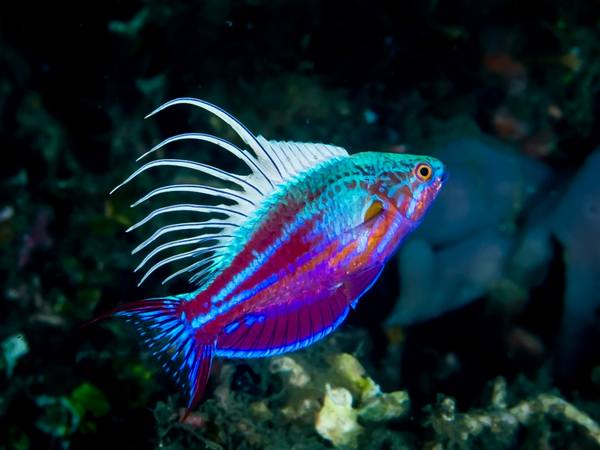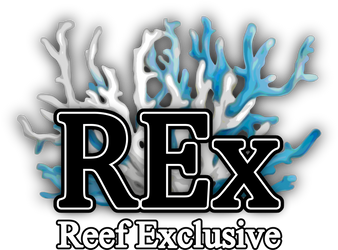
Blue Flasher Wrasse (Paracheilinus Cyaneus) Male
Species Name : Paracheilinus Cyaneus
Care Level : Easy
Temperament : Peaceful
Color : Blue, Red, Yellow
Diet : Carnivore
Reef Compatible : Yes
Water Conditions : sg 1.020-1.025, 72-78° F, dKH 8-12, pH 8.1-8.4
Max. Size : 3"
Origin : Indo-Pacific, Indonesia
Family : Labridae
Minimum Tank Size : 55 gallons
Blue Flasher Wrasse (Paracheilinus Cyaneus) is an extremely beautiful flasher wrasse that shows intense colors.
The Blue Flasher Wrasse sports a vibrant coloration that immediately catches the eye. The predominant red coloration provides a striking background for the stitching of blue coloration that runs across its body in layers. Demonstrating sexual dichromatism, the coloration of male and female Blue Flasher Wrasse is distinct in difference. The female is more uniform in coloration, demonstrating a subdued elegance. In contrast, the male Blue Flasher Wrasse can exhibit a wild array of color. When the male Blue Flasher Wrasse develops its display coloration, it is easy to understand why it is also known as the Peacock Flasher Wrasse. The back develops a spectacular metallic blue coloration that is simply electrifying.
Blue Flasher Wrasse thrives in 55 gallon tanks with abundant open water and plenty of rocks for it to hide in. Tanks should have a tightly closing lid as the Blue Flasher Wrasse might try to escape. They don't bury themselves in the sand at night, as do many other wrasses. Instead, they wedge themselves into a rock crevice.
Unlike some other wrasses, the Blue Flasher is a great addition to a reef community and will not both any small fishes or invertebrates. They can be kept with members of their own species.
Flasher Wrasses should be fed two or three times a day in order to maintain their body weight. Since they feed on zooplankton, they will not thrive in the reef tank if they are fed infrequently. As to diet, will eat most regular aquarium foods, e.g., finely chopped various frozen or fresh meaty foods such as mysis, squid, fish flesh, shrimp, clam.
